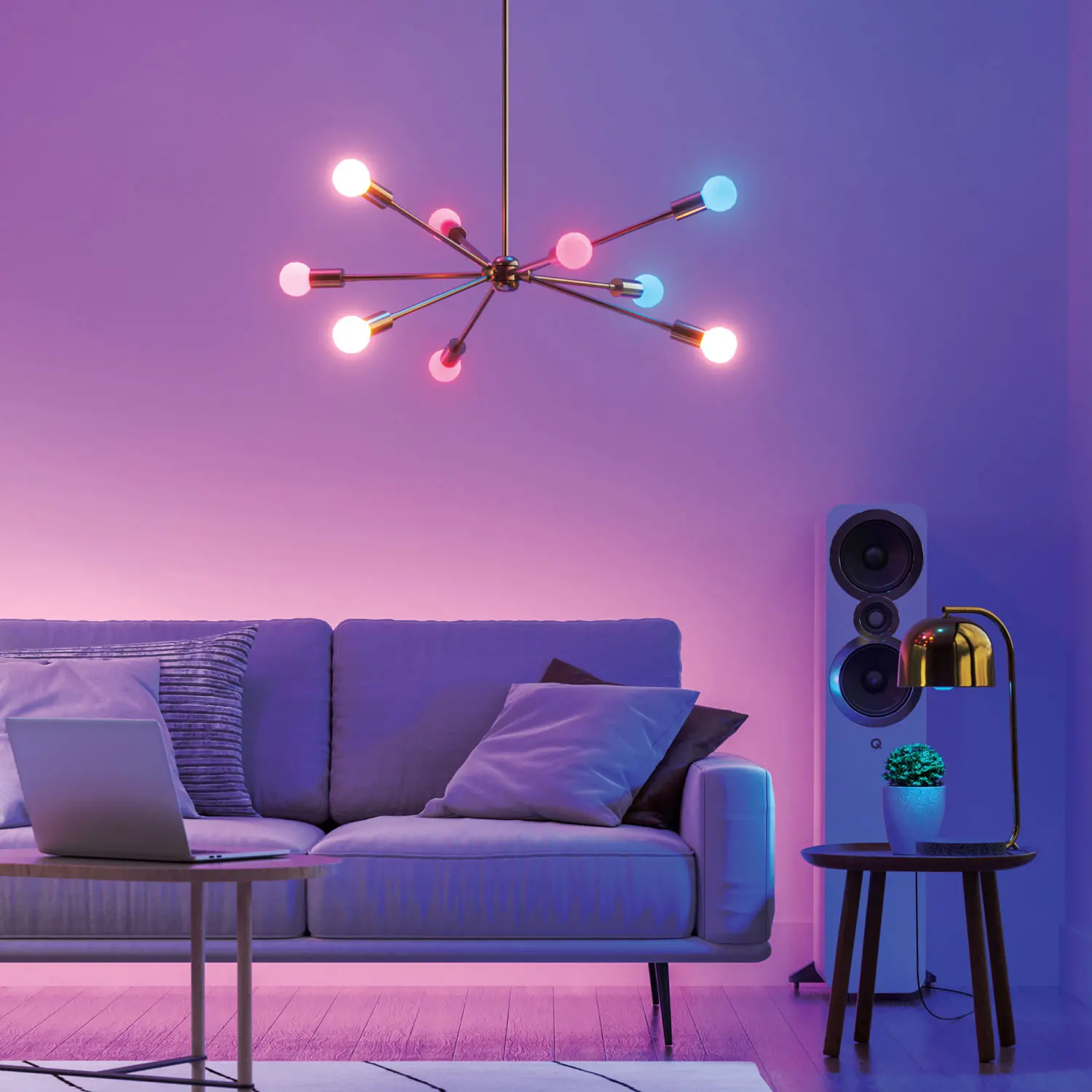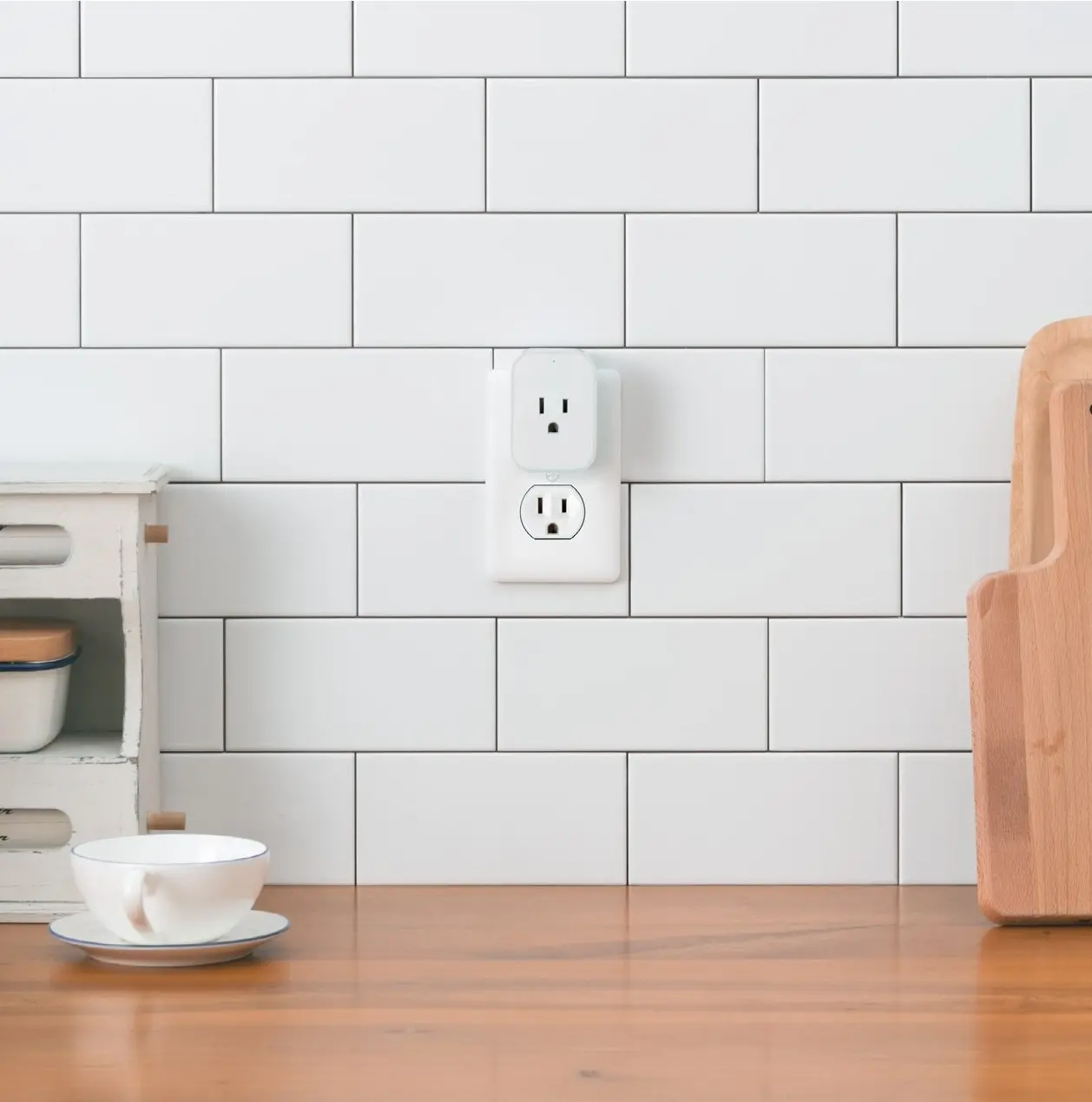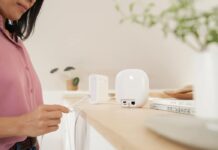
Making Smart Home improvements is a worthwhile investment. It adds security, convenience, and cost-savings to any household. At the very basics, a smart home starts with a smart speaker and the built-in voice assistant. From there, you can add a variety of devices to make your home smart. In this article, we’ll discuss smart lights, smart plugs, and smart switches. We’ll explore different use cases for each, and discuss which one is right for you.

Controlling lights in a smart home with smart lights
The traditional way to turn a light on and off in a house is from a light switch. Smart Lights provide a new way to turn lights on or off—voice control. Each smart light has a built-in wireless adapter that connects to your W-Fi network and smart speaker. This provides three benefits. One is turning lights on and off with your voice. Two, is changing the light colour through voice. Three, the ability to adjust the light brightness with voice commands.
Smart lights can be turned on or off individually, or group together. For example, you could group all the smart lights in your living room as one group, and the lights in your kitchen as another group. Furthermore, you could group all your smart lights together as a “House lights” group.
The pros and cons of smart lights
The great thing about smart lights is not having to use a switch to turn lights on or off. This is nice if your hands are full of groceries and you enter the kitchen. Having lights grouped together makes it easier to control multiple lights. For example, before going to bed, tell your bedside smart speaker to turn all the house lights off.
There is one important thing to note about using smart lights—the light switch must always be on. If the switch is off, there is no power going to the light. Hence, you won’t be able to turn them on or off. If you live by yourself, this shouldn’t be an issue. However, if you live with family members or roommates, you might want to consider smart switches instead.

Controlling lights in a smart home with smart switches
A Smart Switch is pretty self-explanatory. What people might not know are all the benefits smart switches provide in a home. For one, it allows you the ability to remotely control your house lights. If you’re on vacation and you want to make it appear that your home, simply turn your house lights on from your smart home. This adds a layer of security making it appear that someone is home.
Smart switches also allow automation and scheduling. From a smartphone app, you can set when the lights go on and off. This is great for getting kids into a daily routine. Schedule their bedroom lights to turn on at a specific time in the morning. Then at night, have the lights turn off to signal bedtime.
The pros and cons of smart switches
The big benefit of smart switches is voice control. Like with smart lights, users can turn lights on or off with their voice. This could be individual lights or in groups. The difference here is that you can also still turn the lights off and on from the switch. Even if the switch is off, users can still turn the lights on with voice commands. This is perfect for families who want the best of both worlds. Some members may use the switch while others use voice. This flexibility makes smart switches incredibly practical in a modern day home. It’s the one thing I’m missing in my smart home.
The one con of smart switches is their inherent singular function. Like traditional switches, smart switches only turn lights on and off. The only difference is the flexibility of using the light switch, app, or voice.

Controlling devices in a smart home with smart plugs
Another way to control lights is with Smart Plugs. However, this is limited to lights that plug into the wall. Some examples are bedside lights, table lamps, and desk lights. Smart plugs work with a variety of devices and can do more than just turn them on and off. One of the primary benefits is energy usage monitoring. Have you ever wondered how much it costs you to keep that wine fridge on all year? A smart switch can tell you exactly that.
Another benefit of having devices connected to a smart switch is voice control. Turn devices like your coffee maker on from bed with your voice. All you need is a smart speaker nearby. Want to get the kids to the dinner table? Turn off their gaming console with your voice.
The pros and cons of smart plugs
Having devices connected to smart plugs provides a lot of benefits. In addition to in-app scheduling, energy monitoring and voice control, smart plugs provide security and peace of mind. Make it appear that your home by remotely turning devices on from your smart home. Plus, if you forget to turn the portable heater off, do it remotely from the smart plug app.
There are however some cons with smart plugs. First, the devices need to have a dedicated power on/off button. The device needs to always be left in the power “on” position. Some devices like TVs may not work with smart plugs. Second, they tend to take up a lot of space when plugged into an outlet. This is especially problematic with newer outlets with USB ports in the middle. Some smart plugs are big and prevent access to those ports when plugged in.
Choosing between smart lights, smart switches, and smart plugs
Many people may wonder if they should get smart switches or smart lights. My advice is to get a combination of both. Smart lights are good in bedrooms, gaming rooms, and entertainment rooms. Smart switches are great to control kitchen and hallway lights. By combining them together, you can achieve full voice control and colour changing capabilities.
Smart plugs are great to have on standby. You never know when they will come handy. I always keep a few just in case. For example, recently the weather got very hot at night. I connected a spare smart plug to a fan and scheduled it to stay on for several hours at night. That totally helped me fall asleep during that heat wave.
If this is your first time building a smart home, read this buying guide. It tells you everything you need to know about setting up a smart home from scratch. Then, read this smart plugs and switches buying guide. By then, you’ll know exactly what you need to build your dream smart home.



